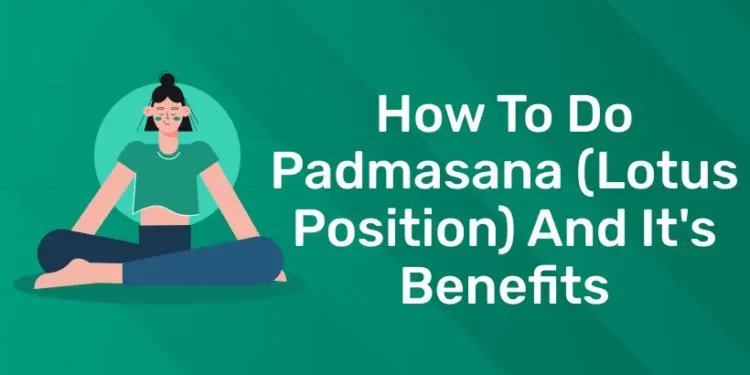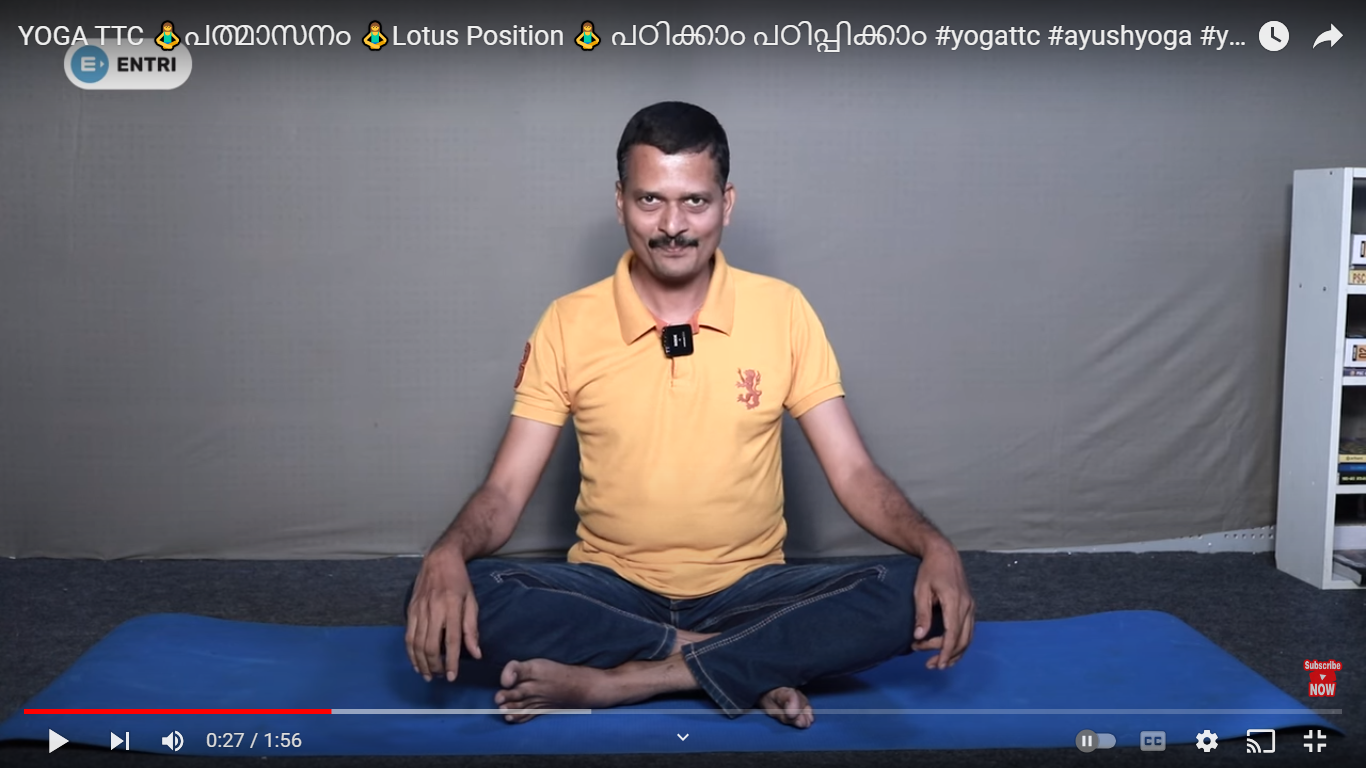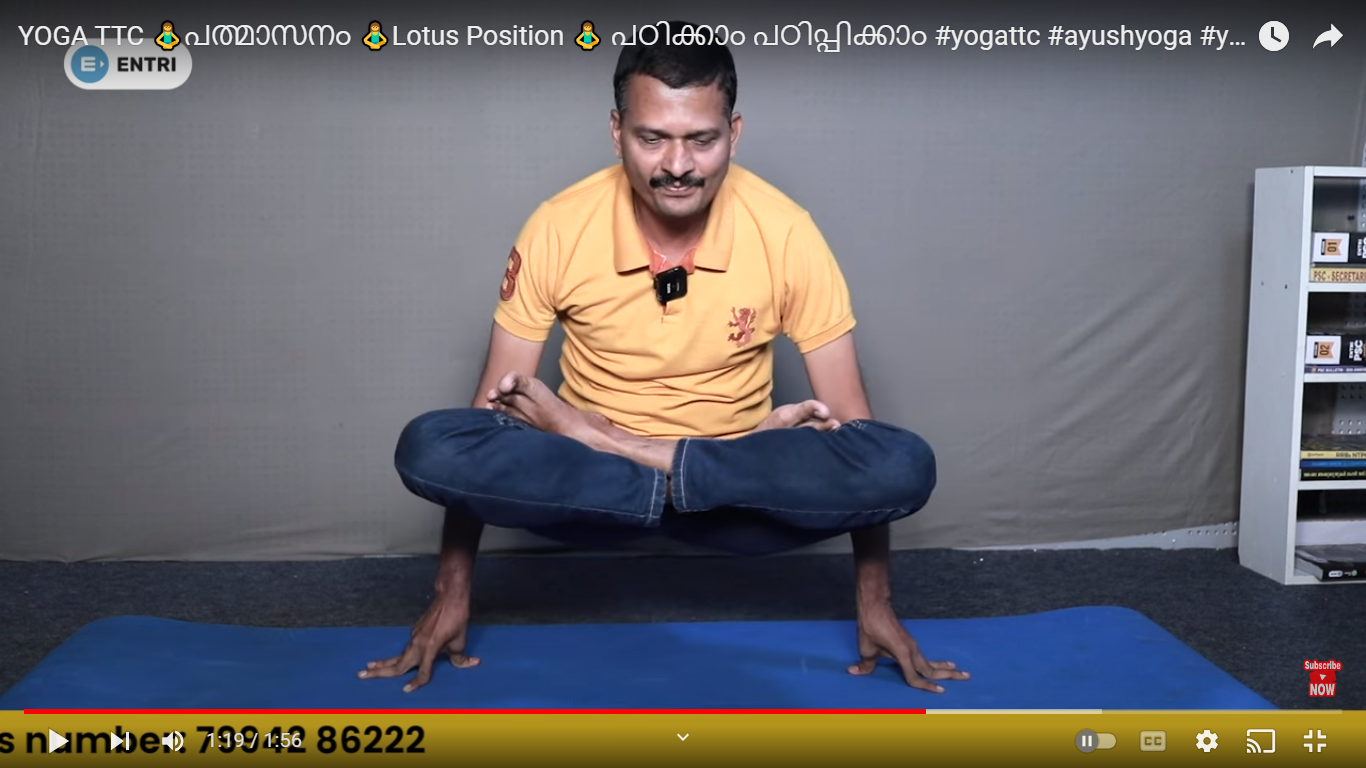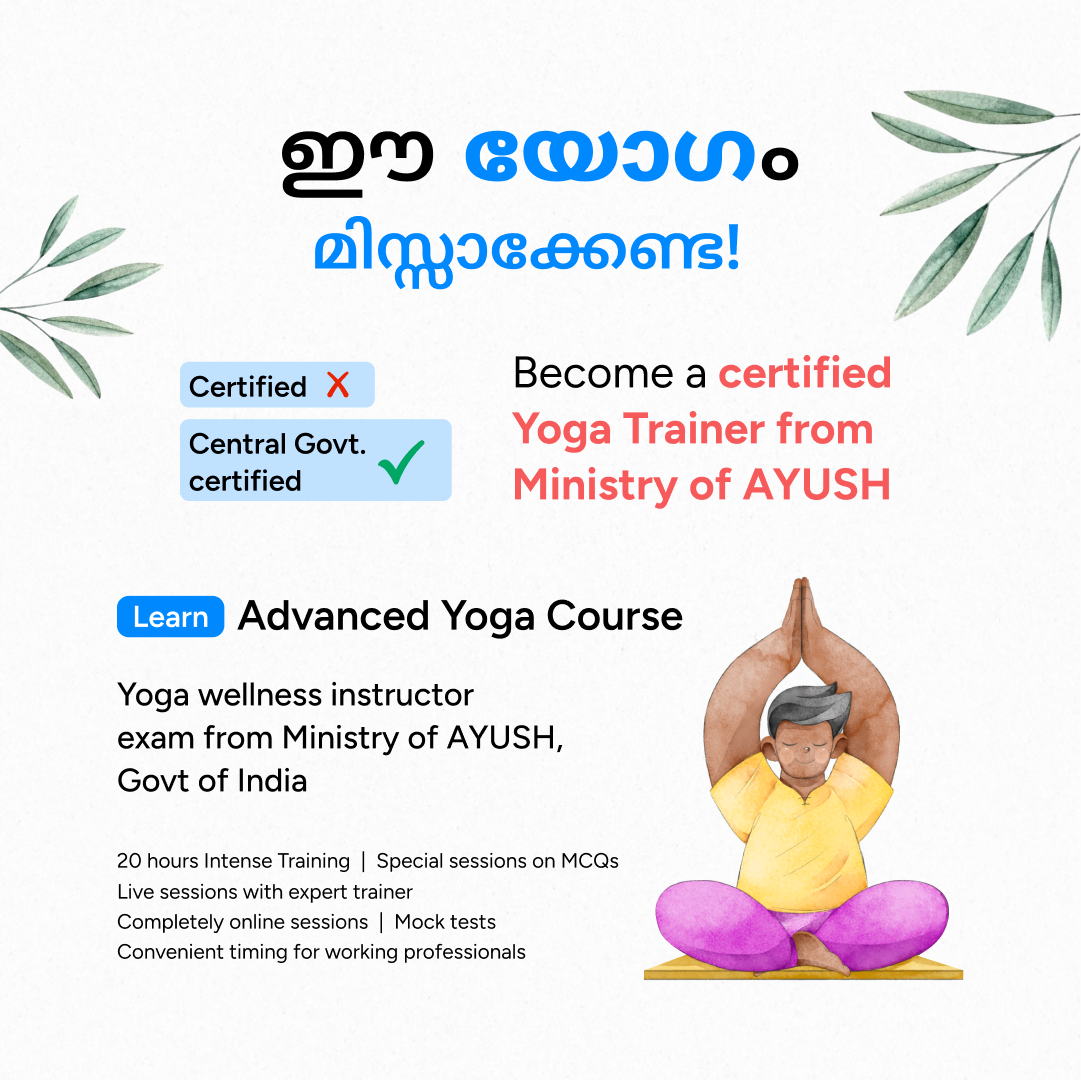Table of Contents
Many Vedas and Upanishads refer to yoga, which emphasizes meditation, letting go of worldly attachments, and achieving body, mind, and soul harmony. Modern society, particularly in Western nations, has a very different concept of yoga, one that emphasizes posture-based practices aimed at relaxation and physical fitness. Seeing how the ancient and the modern blend to create a stunning product that is in high demand now days is really interesting! Yoga facilitates the integration of the internal and external environments, resulting in harmony in every way. As one of the possible methods for achieving holistic health, asanas, or postures, have garnered recognition and appreciation. In this article we are discussing about padmasana or lotus pose.
Get Certified, Get Confident! Join Our Yoga Teacher Training Course!
What Is Padmasana Or Lotus Pose?
Padmasana, or lotus pose, is a cross-legged pose that eases tension in the mind and helps with a host of physical problems. As with a lotus, regular practice of this posture promotes the practitioner’s total flowering, which is why it’s called Padmasana. The Lotus pose is often referred to as the Vajra position in Chinese and Tibetan Buddhism.
How To Do Padmasana Or Lotus Pose?
1: Which of these is the primary goal of yoga practice?
- With your back straight and your legs extended in front of you, take a seat on the floor or a mat.
- Place the bent right knee on the left thigh. Ensure that the heel is in close proximity to the abdomen and that the soles of the feet point upward.
- Now take the second leg and perform the same step.
- Put your hands in mudra position on your knees while your legs are crossed and your feet are resting on opposing thighs.
- Maintain a straight head and an upright spine.
- Take a few more deep, slow breaths in and out while holding.
CLICK HERE TO WATCH THE FULL VIDEO ON HOW TO DO PADMASANA OR LOTUS POSE
Become a Certified Yoga Instructor
Yoga Teacher Training Course by Entri App: Master authentic yoga techniques, earn certification, and build a successful career as a professional yoga instructor.
Join Now!Benefits Of Padmasana Or Lotus Pose
- Enhances digestion– The reason for this is that Padmasana yoga stimulates digestion by gently massaging the abdomen.
- Eases stress in the muscles and controls blood pressure -This is because the position helps release muscle tissues that are firmly bound. This yoga stance, with its consistent breathing pattern, helps to clear the mind and release bad thoughts and emotions.
- Aids expectant mothers in childbirth – This yoga pose brings stability and power to the pelvic muscles and strengthens the pelvic region. Consequently, the discomfort and contractions experienced during childbirth are more tolerable.
- Lessens the pain associated with menstruation – As the abdomen is massaged gently in padmasana yoga, menstrual cramps are somewhat alleviated and the abdomen is given space to relax.
It’s important to remember that while padmasana has many advantages, not everyone can benefit from it. Those who have ailments to their knees or ankles should use caution when adopting this position or seek the guidance of a qualified teacher. To get the most out of Padmasana, you need to be careful of your body and aware of it.
Yoga Teachers Training Course By Entri
If you want to have a fulfilling career and live a better, healthier life, yoga is a terrific solution! Yoga teachers are in high demand in both the public and private sectors. Entri App offers a 200-hour, three-month course that includes online training, in-person instruction, and practical practice to help you prepare for the Central Government AYUSH Ministry’s YOGA WELLNESS INSTRUCTOR examination. It’s feasible to have flexible work hours, assist others in achieving well-being, and become a highly sought-after yoga instructor!
| Also Read | |
| Different Pranayama Techniques | Paths of Yoga |
| How to do Hanumanasana (Monkey Pose) and it’s Benefits | Rocket Yoga |
| Surya Namaskar: Step-by-Step Guide for Sun Salutation |
CONCLUSION
One of the most important yoga poses, padmasana (also called lotus pose) has numerous physical and mental health advantages. Not only is the cross-legged sitting position a useful aid in meditation, but it also holds great significance in Buddhist and Hindu traditions. Students can benefit from improved relaxation, improved focus, and general wellness when they practice Padmasana correctly and under the guidance of a qualified instructor. This pose helps improve mental clarity, focus, and the flow of energy throughout your body. Including Padmasana in your yoga practice, regardless of your level of experience, will help you achieve spiritual enlightenment and a sense of calm and peace.
Become a Certified Yoga Instructor
Yoga Teacher Training Course by Entri App: Master authentic yoga techniques, earn certification, and build a successful career as a professional yoga instructor.
Join Now!Frequently Asked Questions
How beginners can learn yoga padmasana?
Beginners might try the Ardha-Padmasana, also called the Half-Lotus pose, in which one leg crosses over the other toe while the other is stretched out, if they are having trouble sitting in full Padmasana. With increasing flexibility, one can eventually work their way up to a full Padmasana.
Which is the sanskrit symbolism and name for padmasana
The term “padma” (which means lotus) and the word “asana” (which means posture) are thought to be the sources of the Sanskrit word padmasana. The lotus flower holds great symbolic meaning in Hindu and Buddhist traditions, representing enlightenment, purity, and spiritual growth. The lotus blooms on which gods are typically portrayed represent their heightened mental condition.
Which are different variations in Padmasana (Lotus Pose)?
To accommodate varying degrees of flexibility and comfort, padmasana can be changed or adjusted. Try a half-lotus posture, where you place one foot over the other thigh, if the full Padmasana is too challenging. Another option is Lotus on a Chair, which enables those with restricted mobility to take use of the advantages of yoga while seated.

























